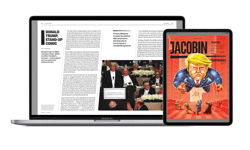Even after five years of declines, Q1's numbers were startling: US unit sales down 15%, dollars down 11.5%, although average cover price was up 4% to $4.98 (thanks to growing numbers of high-priced bookazines). Importantly, the overall results reflected that, for calendar reasons, the critical weeklies published one less issue than in Q1 2012. Still, for those high-volume titles, which have been particularly hard-hit in recent periods, even adjusted, per-issue average Q1 units were down 14% and dollars were down nearly 12%.
Assuming (hoping) that Q1's severity was somewhat aberrant, 2012's full-year overall results were still nothing to celebrate: units down 9%, dollars down 7.4%.
In what sounded like pleas for help as much as warnings, wholesalers speaking at the conference repeatedly underscored the toll that sales and efficiency declines and rising costs are taking on their businesses.
Ron Clark, president / CFO at Hudson News, declared flat-out that if current sales trends and financial pressures continue, there will be one less wholesaler a year from now - and his point that wholesalers' survival depends on further reducing costs, as well as stemming the downward sales spiral, was echoed by the other two remaining large wholesalers.
The potential implications of a major wholesaler exiting the business, particularly at this juncture, are scary, to put it mildly (in releasing Q1 data, MagNet noted that the performance was the worst since Q1 2009, when major wholesaler Anderson News threw in the towel). So publishers / national distributors are more motivated than ever to try to help wholesalers get on firmer financial footing.
But looking at the bigger picture, the various conference discussions pointed up the real challenge for the newsstand industry. All players are sincerely motivated and working diligently to improve the business. The question is whether they can now break with historical patterns and find ways to expeditiously resolve various legitimate, differing interests and concerns among the various parties in the supply chain - and even more important, actually implement coordinated, effective, industry-wide efforts not only to improve sales and efficiencies, but to revitalise the magazine category's flagging perception and positioning (read: reduced display space) among the retail community.
Do publishers care about retail?
Indeed, this was the explicit or underlying theme of virtually all remarks offered by publishers, NDs and wholesalers alike during the conference. One particularly recurrent point was the need for channel-wide, coordinated efforts to "change the narrative" with retailers, who increasingly believe that publishers are so focused on digital initiatives, and so discouraged by newsstand trends, that they've "given up" on the retail channel. All agreed that the category must move beyond magazine sales-focused (defensive) interactions with retailers, and effectively, consistently and in unison convey the broader strategic and profit value that the category contributes to retailers.
Specifically, there's a growing amount of hard data proving that exposure to magazines in stores (both editorial and ads) directly drives consumer purchases of other products in stores - a capability unique to the magazine category.
A Time / Warner Retail executive also stressed that magazines can offer retailers unique content assets and authority - expertise being actively sought by retailers as they (like the product brands carried in their stores) try to harness digital and mobile content to reach and influence consumers.
Publishing executives further emphasised the need for more aggressive initiatives to use their substantial digital assets to drive retail sales of both magazines and other products. One obvious but so far little-used possibility is mobile and email messaging to magazines' opt-in database names promoting new issues hitting stores (ideally geo-targeted to highlight magazine promotions being offered in stores in prospects' vicinities). Might publishers pool their collectively massive digital contacts for large-scale promotions to drive overall category results? Or share their consumer names / connections / relationships with retailers and in turn get access to retailers' powerful consumer insights data - for mutually beneficial initiatives?
In a panel, top executives from Hearst, Meredith, Condé Nast and special interest publisher AIM all publicly reiterated how crucial the retail channel is to their companies, and their commitment to supporting it. Increased budgets and resources to enable their newsstand teams to try new initiatives would be a great place to start.












